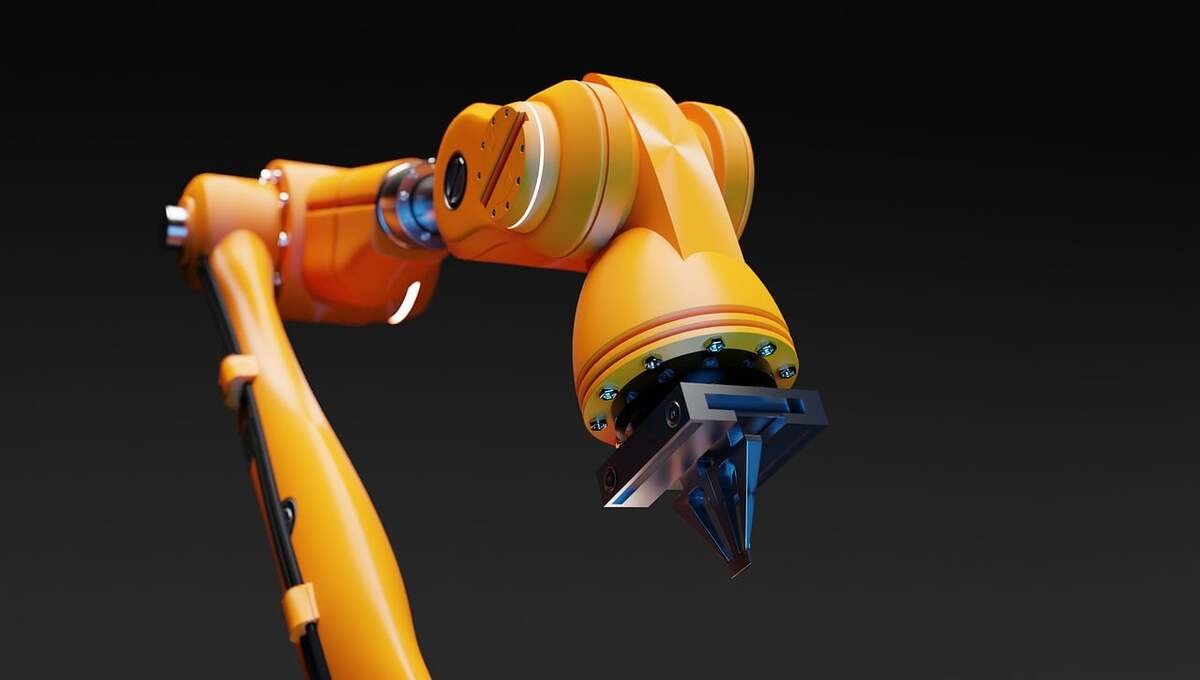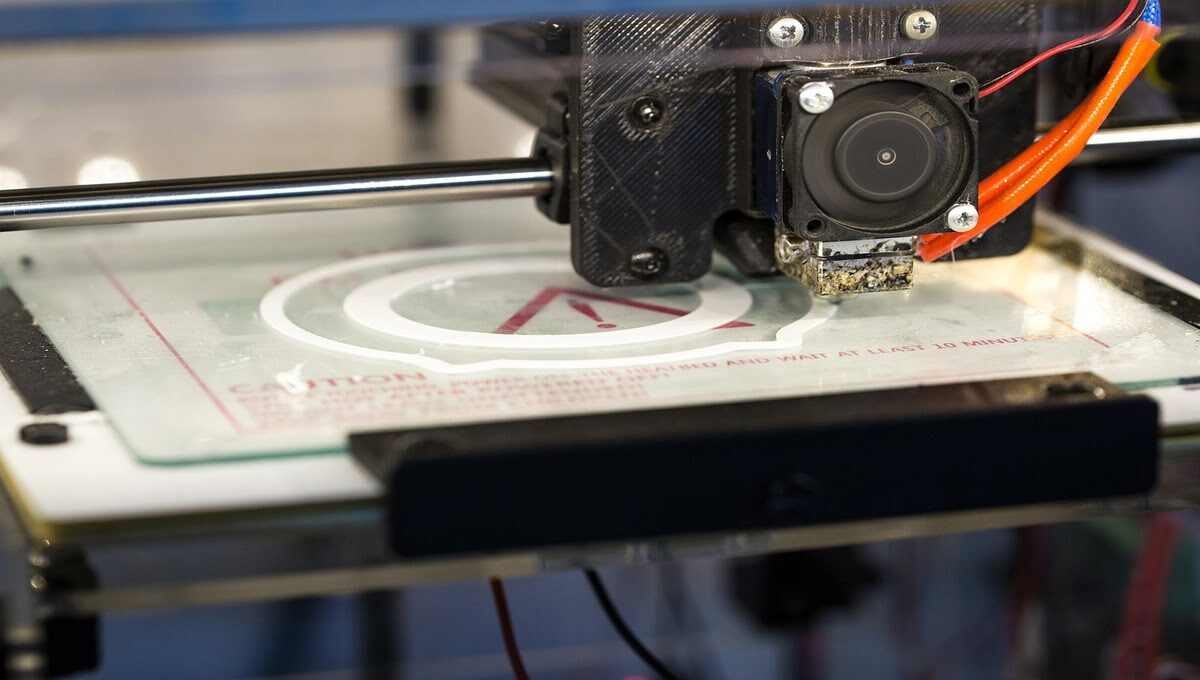Future
Self-Driving Cars: The Promise and the Perils

Introduction Self-Driving Cars
Self-driving cars, also known as autonomous vehicles or driverless cars, have emerged as one of the most groundbreaking technological advancements in the transportation industry. These vehicles are capable of navigating and driving without human intervention, relying on sophisticated sensors, artificial intelligence (AI), and machine learning algorithms. The development of self-driving cars is driven by the pursuit of safer, more efficient, and sustainable transportation solutions.
Advancements in Self-Driving Technology
One of the key pillars of self-driving technology is sensor technology. LiDAR (Light Detection and Ranging), radar, cameras, and ultrasonic sensors enable self-driving cars to perceive their surroundings accurately. These sensors create a detailed 3D map of the environment, allowing the vehicle to make real-time decisions while driving.
Artificial Intelligence and machine learning play a crucial role in enabling self-driving cars to navigate complex road situations. The AI algorithms analyze sensor data, recognize patterns, and learn from various scenarios, making autonomous vehicles more capable and adaptable to different driving conditions.
Despite significant advancements, challenges remain in achieving full autonomy. Inclement weather, unclear road markings, and complex urban environments are some of the obstacles that self-driving cars must overcome to ensure safe and reliable operation.
Safety and Regulation
When it comes to autonomous vehicles, safety comes first. Proponents argue that autonomous vehicles have the potential to significantly reduce accidents caused by human error. However, incidents involving self-driving cars have raised concerns about their safety and reliability.
Comparing the safety records of self-driving cars with traditional vehicles is an ongoing area of research. Striking the right balance between safety and innovation is essential for gaining public trust and wider adoption of autonomous vehicles.
Regulation is another critical aspect that impacts the development and deployment of self-driving cars. Governments worldwide are formulating policies and guidelines to govern the testing and operation of autonomous vehicles on public roads.
Impact on Transportation Industry
The rise of self-driving cars is poised to disrupt the traditional transportation industry. Ride-hailing services are likely to adopt autonomous vehicles, leading to a significant transformation in the taxi and rideshare sector. Furthermore, the trucking and logistics industry could witness increased efficiency and reduced costs with the adoption of self-driving trucks for long-haul routes.
However, the widespread adoption of self-driving cars may also result in job displacements. Professional drivers and related workforce may face challenges as the industry transitions to autonomous transportation.
Environmental Impact
Self-driving cars have the potential to positively impact the environment. The integration of autonomous vehicles with electric and alternative fuel technologies could lead to a substantial reduction in greenhouse gas emissions. Additionally, self-driving cars can optimize traffic flow, leading to less congestion and lower fuel consumption.
Autonomous Vehicles and Smart Cities
Self-driving cars play a vital role in the development of smart cities. The data collected by autonomous vehicles can be utilized for efficient traffic management, optimizing traffic signals, and reducing congestion. In a smart city, self-driving cars can communicate with each other and infrastructure to make transportation more seamless and safer.
Challenges and Concern
The development of self-driving cars also brings several challenges and concerns. One major ethical dilemma revolves around programming autonomous vehicles in situations where accidents are inevitable. Decisions about whom to protect in such situations have sparked debates within the AI and automotive communities.
Moreover, the cybersecurity of self-driving cars is a critical concern. As autonomous vehicles become more connected, they are susceptible to hacking, potentially leading to catastrophic consequences.
Public acceptance and trust in self-driving technology are also essential for its successful integration into society. Building confidence among users and addressing concerns about safety and privacy is crucial for widespread adoption.
The Future of Self-Driving Cars
Looking ahead, the future of self-driving cars appears promising. Continued advancements in technology, AI, and sensor capabilities are expected to drive the development of even more sophisticated autonomous vehicles. Furthermore, self-driving cars are likely to integrate with other emerging technologies, such as augmented reality and smart infrastructure.
Some experts speculate that fully autonomous societies, where people rely on self-driving cars for their transportation needs, may become a reality in the coming decades.
Conclusion
Self-driving cars have the potential to revolutionize the transportation landscape, offering safer, more efficient, and environmentally friendly mobility solutions. While challenges and concerns exist, ongoing research, development, and regulatory efforts are paving the way for a future where autonomous vehicles play a significant role in shaping smart cities and sustainable transportation systems.
FAQs of Self-driving cars
Are self-driving cars already available for purchase?
Not yet. While some vehicles have autonomous features, fully self-driving cars for consumer purchase are still in the development and testing phase.
How do self-driving cars navigate in complex urban environments?
Self-driving cars use a combination of sensors and AI algorithms to interpret the environment and make informed decisions, allowing them to navigate complex urban settings.
What safety measures are in place to prevent accidents with self-driving cars?
Self-driving car manufacturers implement safety features such as redundant systems, emergency braking, and constant monitoring to minimize the risk of accidents.
Can self-driving cars operate in extreme weather conditions?
The ability of self-driving cars to operate in extreme weather conditions is still a challenge. Snow, heavy rain, and fog can affect sensor performance and navigation.
When can we expect fully autonomous vehicles to become mainstream?
While timelines vary, experts predict that fully autonomous vehicles could become more widespread in the next decade, subject to technological advancements and regulatory
Future
Sand Batteries : A Sustainable Energy Solution

Introduction of Sand Batteries
In our quest for a sustainable and eco-friendly future, innovative solutions for energy storage have become paramount. The rise of renewable energy sources, such as solar and wind power, has led to an increasing need for efficient and cost-effective energy storage systems. One such groundbreaking technology that holds immense promise is the Sand Battery. In this article, we will delve into the fascinating world of Sand Batteries, exploring how they work, their advantages, and their potential to revolutionize the energy storage landscape.
Sand Batteries: Understanding the Concept
What are Sand Batteries?
Sand Batteries, also known as silicon-based batteries, are a novel type of energy storage system that harnesses the power of silicon derived from ordinary sand. Unlike traditional lithium-ion batteries, which rely on scarce and expensive materials, Sand Batteries utilize the abundant resource of sand to store and release energy.
How Do Sand Batteries Work?
In a sand battery, the process involves the controlled flow of electrical currents through the grains of sand. The energy is stored in the form of mechanical stress within the sand particles. When electricity is required, the stress is released, and the sand grains return to their original state, generating electrical power.
Advantages and Disadvantages of sand batteries:
Advantages of Sand Batteries
- Low cost: Sand is an abundant and inexpensive material, making sand batteries a cost-effective way to store energy.
- High energy density: Sand batteries can store a significant amount of energy in a small space.
- Long lifespan: Sand batteries have a long lifespan, with some estimates suggesting that they could last for up to 100 years.
- Safe and non-toxic: Sand batteries are considered to be safe and non-toxic, making them a good option for storing energy in densely populated areas.
- Low-temperature proof: Low-temperature resistance: Unlike other mediums such as water, sand does not freeze at extremely low temperatures.
- Environmentally Friendly: One of the most significant advantages of sand batteries is their minimal environmental impact. They do not use hazardous materials or produce harmful byproducts, making them a clean and sustainable energy storage solution.
Sand batteries also have some disadvantages, including:
- Low power density: Sand batteries have a lower power density than traditional batteries, meaning that they cannot generate as much power in a short period of time.
- Heat loss: Sand batteries can lose heat over time, which reduces their efficiency.
- Technical challenges: Sand batteries are still a relatively new technology, and there are some technical challenges that need to be overcome before they can be widely deployed.
Here is a table summarizing the advantages and disadvantages of sand batteries:
| Advantage | Disadvantage |
|---|---|
| Low cost | Low power density |
| High energy density | Heat loss |
| Long lifespan | Technical challenges |
| Safe and non-toxic | |
| Low-temperature proof |
Overall, sand batteries have the potential to be a valuable tool for storing renewable energy. They are low-cost, safe, and long-lasting, and they can store a significant amount of energy in a small space. However, there are some technical challenges that need to be overcome before they can be widely deployed.
Challenges and Limitations
Efficiency and Performance
Although sand batteries show great promise, they still face challenges regarding efficiency and performance. Researchers are working to improve the energy conversion rates and overall performance of these batteries.
Technological Advancements Needed
For sand batteries to become a mainstream energy storage solution, further technological advancements and research are required. This includes optimizing the design and finding new ways to enhance their energy storage capabilities.
Applications of Sand Batteries
Renewable Energy Integration
Sand batteries can play a crucial role in integrating renewable energy sources like solar and wind into the grid. They can store excess energy generated during peak times and release it during periods of low generation.
Off-Grid Power Supply
In remote areas or during emergencies, sand batteries can act as a reliable off-grid power supply. Their durability and sustainability make them ideal for supporting essential services during challenging times.
Electric Vehicles
The automotive industry can also benefit from sand batteries. As electric vehicles gain popularity, sand batteries can provide a more efficient and environmentally friendly energy storage solution.
Sand Batteries vs. Traditional Batteries
Environmental Impact
Compared to conventional batteries that use harmful chemicals, sand batteries have a significantly lower environmental impact. They contribute to reducing pollution and greenhouse gas emissions.
Energy Storage Capacity
Sand batteries have the potential to store more energy per unit volume than traditional batteries, making them a viable option for energy-intensive applications.
Cost-effectiveness
Due to the abundance of sand as a raw material, sand batteries can be more cost-effective than traditional batteries, paving the way for affordable energy storage solutions.
Sand Batteries: A Step Towards Sustainability
Reducing Carbon Footprint
By offering a clean and green energy storage alternative, sand batteries contribute to reducing carbon footprints and combating climate change.
Enhancing Energy Security
As the world becomes increasingly dependent on electricity, sand batteries can enhance energy security by providing reliable backup power and stabilizing the grid.
Fostering Technological Innovation
The development of sand batteries represents a significant leap in energy storage technology, fostering innovation and opening up new possibilities for a sustainable future.
Future Prospects and Research
Ongoing Developments
Researchers and companies continue to invest in the development and improvement of sand batteries. Ongoing research aims to overcome current limitations and unlock their full potential.
The Road Ahead
As the demand for clean energy solutions grows, sand batteries are poised to become a critical component of the energy landscape. Their scalability and sustainability make them a promising choice for the future.
Conclusion
Sand batteries offer an exciting and sustainable solution for energy storage needs. With their environmentally friendly nature, abundant raw materials, and high energy density, they hold the promise of revolutionizing the way we store and utilize electricity. As technology advances and research progresses, sand batteries will likely play an increasingly important role in shaping a greener and cleaner future.
FAQs
1. How are sand batteries different from conventional batteries?
Sand batteries work based on a physical principle, storing energy as mechanical stress in sand grains. In contrast, conventional batteries rely on chemical reactions for energy storage.
2. Can sand batteries be used in large-scale energy storage projects?
Yes, sand batteries have the potential to be utilized in large-scale energy storage projects due to their high energy density and cost-effectiveness.
3. Are there any geographical limitations for utilizing sand batteries?
No, sand batteries are not limited by geography. They can be implemented in various locations globally, provided there is access to sand as a raw material.
4. What are the main components of a sand battery?
The main components of a sand battery include sand (silicon), electrodes, and a mechanism to control the flow of electricity through the sand grains.
5. How do sand batteries contribute to a greener future?
Sand batteries contribute to a greener future by offering an environmentally friendly and sustainable energy storage solution. They reduce the reliance on conventional batteries, which often use hazardous chemicals, and promote cleaner energy storage practices.
Future
The Future Of Industrial Robots In Manufacturing

Introduction
Industrial robots have revolutionized the manufacturing industry by automating various tasks and improving productivity. These robots, equipped with advanced technologies, can perform repetitive and complex operations with precision and efficiency. In this article, we will explore different types of industrial robots and their applications in manufacturing processes.
Types of Industrial Robots
1. Articulated Robots
Articulated robots are among the most commonly used robots in manufacturing. They feature multiple rotary joints, similar to a human arm, which allow for flexibility and a wide range of motion. These robots are ideal for tasks that require skill and precision, such as welding, painting, and material handling.
2. Cartesian Robots
Cartesian robots, known as gantry or rectilinear robots, operate along three linear axes. Their movements are precise and can be easily programmed. These robots are often used in assembly lines for tasks like picking, placing, packaging, and palletising.
3. SCARA Robots
SCARA (Selective Compliance Assembly Robot Arm) robots are commonly used for assembly and inspection tasks. They have vertical and horizontal joints allowing rotational and linear movements. SCARA robots excel in applications that require high speed and accuracy, such as electronics assembly and screw driving.
4. Delta Robots
Delta robots are known for their speed and precision. They have a unique design with three arms connected to a central base. These robots are frequently used in the food and beverage industry for packaging, sorting, and assembly of small components
5. Collaborative Robots (Cobots)
In a shared office, collaborative robots are made to operate side by side with people. They have built-in safety features, such as force sensing and collision detection, allowing collaboration. Cobots are versatile and can be used in various applications, including assembly, machine tending, and quality inspection.
6. Mobile Robots
Mobile robots, as the name suggests, are capable of autonomous movement. They are equipped with sensors and navigation systems, enabling them to navigate dynamic environments. These robots are often used in material transportation, inventory management, and warehouse operations
Applications of Industrial Robots in Manufacturing
1. Welding
Industrial robots are extensively used in welding processes, offering high precision and repeatability. They can perform arc, spot, and laser welding, resulting in improved weld quality and reduced production time.
2. Painting and Coating
Robots equipped with specialized painting and coating systems provide consistent and uniform finishes. They can efficiently apply paint, adhesives, and protective coatings to various surfaces, ensuring a high-quality and visually appealing end product.
3. Assembly
Industrial robots excel in assembly tasks, where they can precisely handle small and delicate components. They can perform functions like screw driving, glueing, and fastening, leading to increased efficiency and reduced errors in the assembly process.
4. Material Handling
Robots are widely used for material handling operations, such as loading and unloading, palletizing, and sorting. They can easily handle heavy loads and perform repetitive tasks, reducing the risk of injuries and increasing overall productivity.
5. Quality Inspection
Industrial robots with advanced vision systems and sensors can conduct accurate and consistent quality inspections. They can detect defects, measure dimensions, and ensure product compliance, contributing to enhanced product quality and reduced waste.
6. Packaging and Logistics
Robots play a vital role in packaging and logistics operations. They can pack products into boxes, apply labels, and stack pallets, increasing efficiency and minimizing errors in the packaging process. In the logistics industry, robots assist in sorting, loading, and unloading goods, improving warehouse operations.
Conclusion
Industrial robots have transformed the manufacturing industry, offering increased productivity, improved efficiency, and enhanced product quality. By understanding the various types of robots and their applications, manufacturers can harness the power of automation to streamline operations and stay competitive in the global market. Embracing industrial robots in manufacturing is a crucial step toward a more efficient and advanced future.
Frequently Asked Questions (FAQs)
Industrial robots offer numerous benefits, including increased productivity, improved quality and precision, reduced labor costs, enhanced worker safety, and the ability to perform repetitive tasks without fatigue.
While the initial investment in industrial robots can be significant, they often result in long-term cost savings due to improved efficiency and reduced labor requirements. The overall cost depends on factors such as the type of robot, the complexity of the application, and integration requirements.
Industrial robots are designed to work alongside humans and augment their capabilities, rather than replace them entirely. They excel in repetitive, dangerous tasks that require high precision. Human workers still play a crucial role in areas that need complex decision-making, adaptability, and creativity.
Industrial robots can improve product quality by ensuring consistent and precise operations and reducing errors and defects. They can also perform accurate quality inspections and measurements, enhancing product compliance and customer satisfaction.
Safety is a crucial aspect when implementing industrial robots. Collaborative robots are designed with built-in safety features, such as force sensing and collision detection, to ensure safe interaction with human workers. Risk assessments, proper training, and adherence to safety regulations are essential for maintaining a safe work environment.
The future of industrial robots looks promising. With advancements in artificial intelligence, machine learning, and sensor technologies, robots will become more intelligent, adaptable, and capable of complex tasks. They will continue to play a vital role in improving manufacturing processes, increasing productivity, and driving innovation.
Future
Exploring the Metaverse: The Future of the Internet

Introduction
The way we interact, work, and life has been entirely transformed by the internet. From its humble beginnings as a network of interconnected computers, it has evolved into a vast virtual landscape where billions of people connect, share information, and explore new frontiers. However, as technology advances at an exponential rate, a new concept is emerging on the horizon – the metaverse. In this article, we will delve into the metaverse, exploring its potential, implications, and whether it truly represents the future of the internet.
What is the Metaverse?
The metaverse refers to a virtual universe, a collective space where users can interact with each other and digital objects in real-time, using augmented reality (AR), virtual reality (VR), and other immersive technologies. It is an interconnected network of virtual worlds, blurring the lines between the physical and digital realms. In the metaverse, users can create avatars, explore virtual environments, socialize, engage in commerce, and experience a level of immersion previously unimaginable.
The Evolution of the Metaverse
The concept of the metaverse has its roots in science fiction literature, with novels like Neal Stephenson’s “Snow Crash” and Ernest Cline’s “Ready Player One” envisioning expansive virtual worlds where people escape reality. While these fictional depictions served as inspiration, the metaverse is now becoming a tangible reality thanks to technological advancements.
Technologies Enabling the Metaverse
Several key technologies are paving the way for the development of the metaverse:
- Virtual Reality (VR): VR immerses users in a simulated environment, providing a sense of presence and enabling interactions with the virtual world.
- Augmented Reality (AR): AR overlays digital information onto the real world, enhancing our perception and blending virtual elements with our physical surroundings.
- Artificial Intelligence (AI): AI plays a crucial role in the metaverse, powering realistic simulations, intelligent virtual characters, and personalized experiences.
- Blockchain and cryptocurrency: These technologies provide the infrastructure for secure transactions, ownership verification, and digital scarcity within the metaverse.
- Internet of Things (IoT): IoT devices can bridge the physical and digital realms, enabling real-time data exchange and interaction with the metaverse.
The Potential of the Metaverse
The metaverse has enormous promise in a variety of domains:
1. Communication and Socialization
In the metaverse, people can connect and socialize with others from around the globe, transcending geographical boundaries. Through avatars and virtual spaces, individuals can express their identities and engage in meaningful interactions, fostering new forms of community and collaboration.
2. Entertainment and Gaming
The metaverse offers unprecedented opportunities for immersive entertainment experiences. Users can explore virtual worlds, engage in multiplayer games, attend virtual concerts, and participate in interactive storytelling. With haptic feedback and sensory technologies advancements, the metaverse promises to revolutionize the gaming industry.
3. Education and Training
Virtual classrooms and training simulations within the metaverse have the potential to revolutionize education. Students can engage in interactive learning experiences, explore historical events, and conduct scientific experiments in virtual laboratories. This immersive approach to education can enhance engagement, retention, and practical skills development.
4. Commerce and Business
The metaverse presents a new frontier for commerce. Virtual marketplaces and storefronts allow businesses to sell digital and physical goods, while virtual currencies facilitate transactions. Brands can create immersive experiences to showcase their products, and entrepreneurs can establish virtual businesses with lower barriers to entry.
5. Healthcare and Therapy
In the metaverse, healthcare can be transformed through telemedicine and virtual therapy. Patients can access healthcare professionals remotely, reducing geographical barriers and improving accessibility. Virtual environments can also provide therapeutic interventions, such as exposure therapy for anxiety disorders.
6. Personal Expression and Creativity
The metaverse empowers individuals to unleash their creativity and explore new forms of expression. Users can create and customize avatars, design virtual spaces, compose music, and produce virtual artwork. This democratization of creativity allows anyone to become an artist and share their creations with a global audience.
Conclusion
The metaverse represents an exciting frontier in the evolution of the internet. With its potential to revolutionize communication, entertainment, education, commerce, and more, the metaverse offers a glimpse into a future where the boundaries between the physical and digital worlds blur. However, as we navigate this uncharted territory, it is vital to address the challenges and ethical considerations associated with the metaverse to ensure its development aligns with our values and aspirations. Embracing the metaverse responsibly has the potential to shape a future where human connection, creativity, and exploration thrive.
FAQs about the Metaverse
While the metaverse holds promise, there are several challenges and risks to consider. Privacy concerns, security vulnerabilities, and the potential for addiction are among the primary concerns. Additionally, issues related to digital ownership, intellectual property rights, and the digital divide must be addressed to ensure equitable access and fair participation.
The metaverse has the potential to reshape the job market. As new industries and roles emerge, there will be a demand for virtual architects, experience designers, virtual reality developers, and digital entrepreneurs. Conversely, certain traditional jobs may become obsolete or undergo significant transformation.
While the metaverse offers compelling virtual experiences, it is unlikely to replace the physical world entirely. Rather, it will complement and augment our physical reality, providing new avenues for interaction, expression, and commerce. The metaverse and the physical world will coexist, offering unique benefits and opportunities.
The metaverse has the ability to completely transform social interactions. It can bridge geographical barriers, enabling people from different parts of the world to connect and collaborate. However, there are concerns about the impact of excessive virtual interactions on real-world relationships and social skills, highlighting the need for a balanced approach.
As with any transformative technology, the metaverse raises ethical considerations. These include issues related to privacy, data security, digital surveillance, and the potential for manipulation and exploitation within virtual environments. It is crucial to establish ethical guidelines and regulations to ensure the responsible development and use of the metaverse.

 5G1 year ago
5G1 year agoHow 5G Technology Will Revolutionize Our Lives and Work

 Tech4 months ago
Tech4 months ago3d Printer Technology (Application) (History) And (Types)

 5G1 week ago
5G1 week agoWhat is the difference between 5G and 5G Plus?

 Computer1 year ago
Computer1 year ago“Bleeping Computer: Your Ultimate Guide to Cybersecurity”

 Tech1 year ago
Tech1 year agoExplain How Technology Has Affected People’s Activity Levels

 5G1 year ago
5G1 year agoDifference between 5G nsa and 5G sa

 cloud computing4 months ago
cloud computing4 months agoEdge Computing: Revolutionizing Data Processing and Analysis

 Computer1 year ago
Computer1 year agoWhat is a Server on the Internet and How It Works









tlover tonet
January 2, 2024 at 8:10 am
Please let me know if you’re looking for a article writer for your site. You have some really great posts and I think I would be a good asset. If you ever want to take some of the load off, I’d love to write some articles for your blog in exchange for a link back to mine. Please shoot me an email if interested. Thanks!